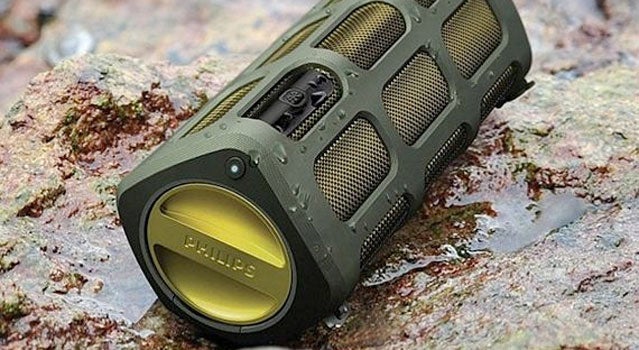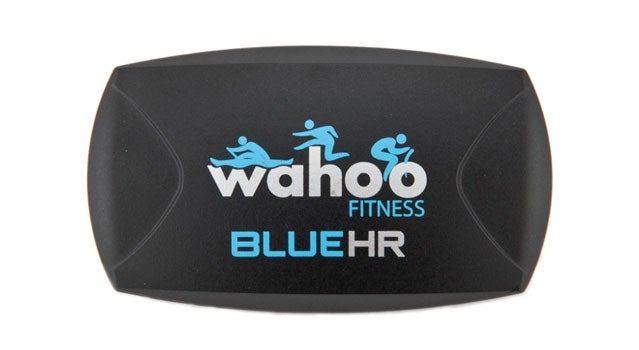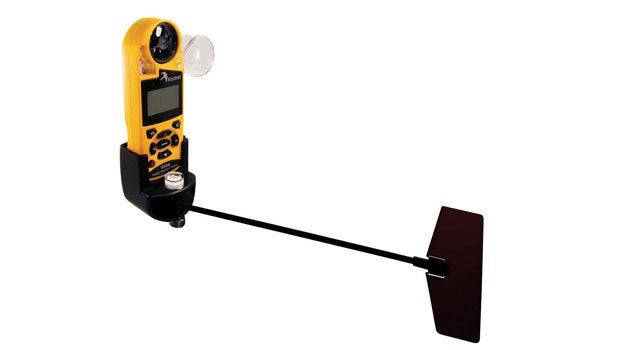The good news is that a bunch of slick new outdoor hardware has arrived, and it suddenly makes your phone a lot more useful. These new products use the wireless system called , which is a lot like the wireless Internet in your house, except scaled down for cell phones. Bluetooth connects portable speakers so you can listen to music in the tent and around the campsite. It bridges to heart rate monitors so you can track workouts and measure your fitness. It even connects technical products that turn your phone into a sophisticated weather station or sailboat navigation device, a function that normally costs thousands of dollars.
The downside? Bluetooth is kinda wonky. Unlike the wireless Internet you’re used to, the system requires the two connected devices to see each other. This “line-of-site” requirement means that every time your cell phone gets pushed behind your back in your jersey pocket, the Bluetooth heart strap stops working, and has to be manually reset. The line-of-site thing is a huge pain, but when it’s working, the connection stretches for 30 feet. In some ways, Bluetooth is far better than wireless Internet because it uses a fraction of the battery power; it’s embedded in almost every modern cell phone; and it’s named after a Norse king who united a bunch of Scandinavian kingdoms. So it’s got that going for it too.
After the jump, we’ll show you some new Bluetooth gadgets for running, biking, and weather collecting.
Philips Shoqbox
Wahoo Heart Rate Monitor
Kestrel 4000
Outdoor Bluetooth Gadgets: Philips ShoqBox

A great new Bluetooth product is the one-pound from Dutch company Philips. The $179 speaker pairs with almost any cell phone to crank eight watts of crisp sound from the onboard neodymium speakers and bass radiators. Now, lest you think we’re advocating using this thing from your backpack, violating the stillness of the AT by bumping MGMT songs at full blast—we’re not. But a portable speaker that accesses MP3s on your phone around the campsite after a long day could be great with the right crowd. The seven-inch speaker is shock-proof and splash-proof, and has an onboard gesture sensor—move your hand in front of it to skip, pause, or resume tracks. The rechargeable lithium battery lasts for eight hours. Unfortunately, for stereo sound, you’d need to buy two ShoqBoxes (and haul two pounds on your back). That might be overkill.
Outdoor Bluetooth Gadgets: Wahoo Heart Rate Monitor

A big player in keeping track of workout data has been the small Atlanta, Georgia-based company . Wahoo makes low-cost devices that use the Bluetooth system to talk to your cell phone, including affordable , and speed and for your bike. What this means is that you can now mix and match this hardware with your favorite phone apps for workouts and hikes.
Back in the day, you were stuck with whatever kludgy software a vendor made. A Timex heart rate strap came with a Timex watch and Timex software. But Wahoo products let you use from the open market such as , , and . One caution is that right now the company’s products are easier to use with iPhones. If you are on Android—like me—chances are iffy that you will find compatible Wahoo components. For starters, instead of Bluetooth, you would use a wireless technology called ANT+ and connect your phone to a special adapter. (In an upcoming Gear Guy post, I’ll explain how to do this.)
For iPhone users, the solutions are simple. Get the $49 Wahoo heart rate strap, put it on, and fire up your favorite workout app to track your heart rate.
Outdoor Bluetooth Gadgets: Kestrel 4000

There are times in the backcountry when a personal weather station would really come in handy. Bluetooth has made a relatively low-cost setup possible with the $459 portable weather meter and your cell phone. The Kestrel talks to Android phones, and lets you choose among several to slice and dice current trends in wind speed, barometric pressure, and temps. Kestrel tailors these gadgets to organizers of sporting events by building in features like a wind chill and heat stress index.
The 3.6-ounce, Pennsylvania-made Kestrel is easy to use and still packs a lot of features. If you want to turn it into a semi-permanent wind sensor, connect it to the $69 . To help judge weather trends, it collects barometric pressure, graphing it on its own little screen or letting you stream the data to your cell phone to graph. To get an accurate snow temp, use the side-mounted temperature sensor and stick the unit directly into the snow pack. Just in case you want to take it on your next mountaineering adventure, it’s waterproof and it floats.


